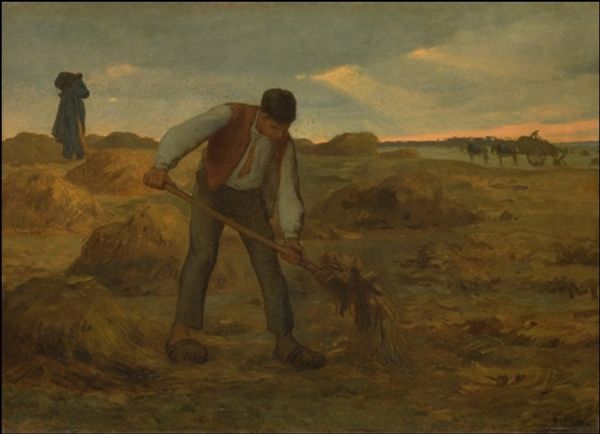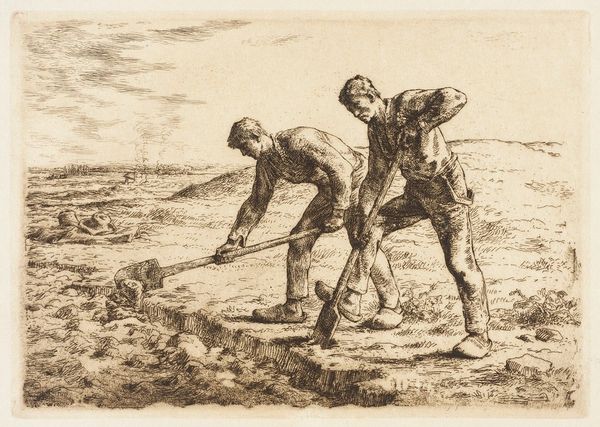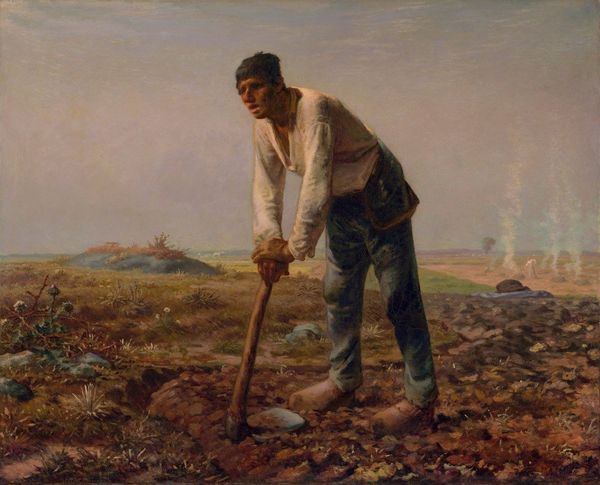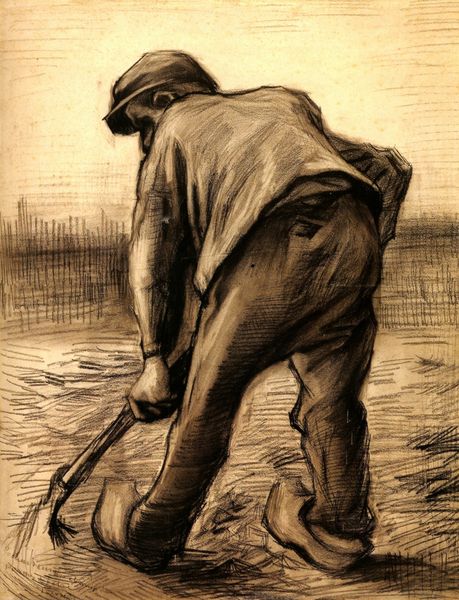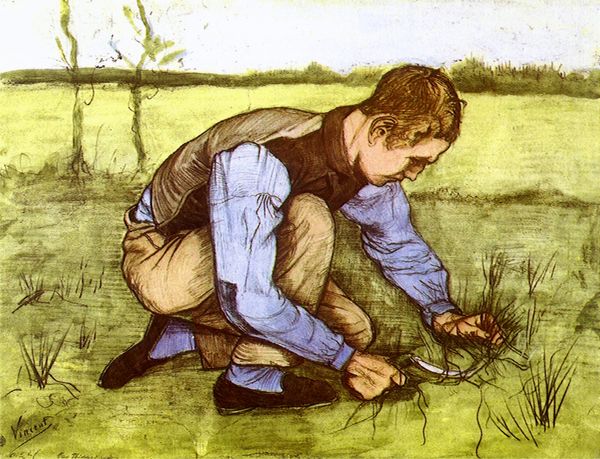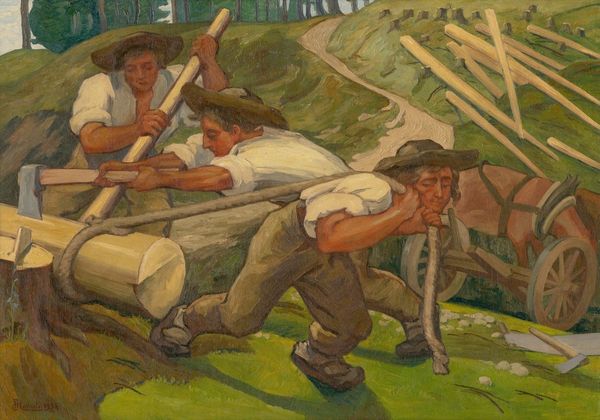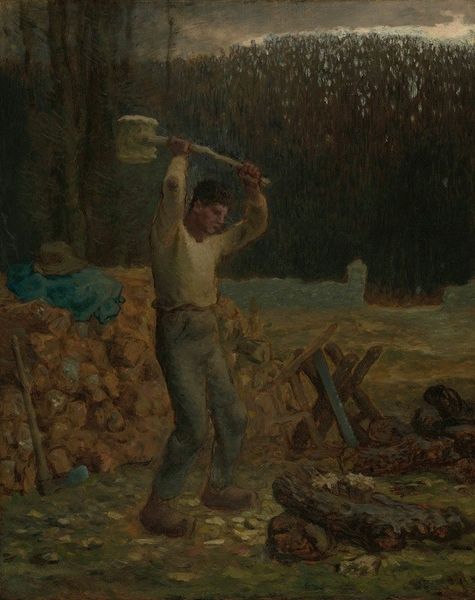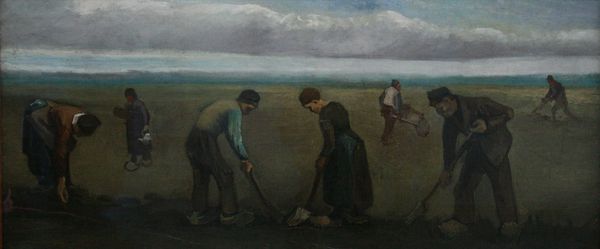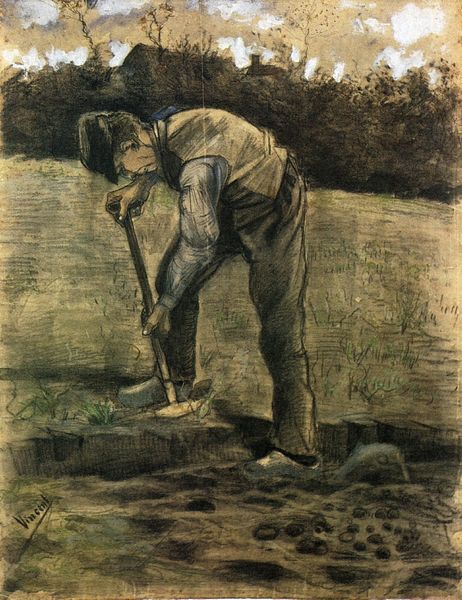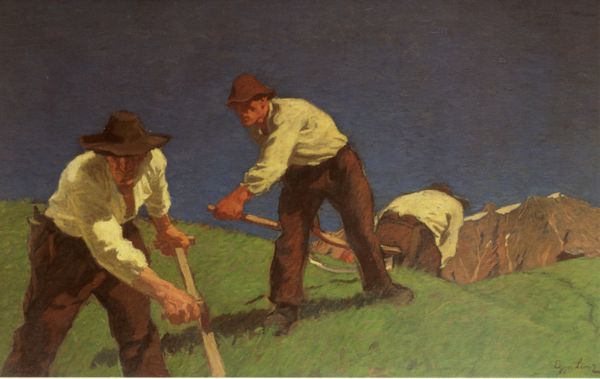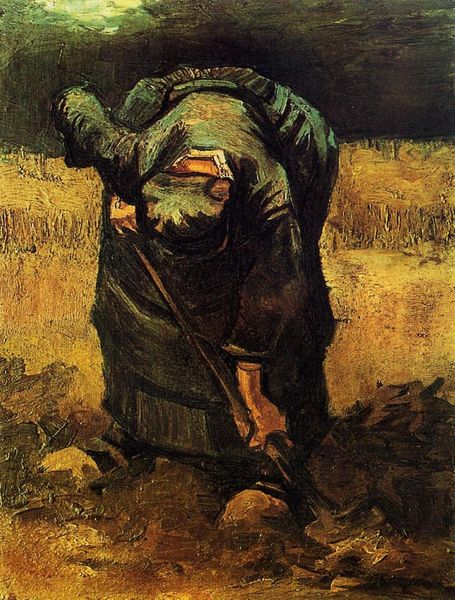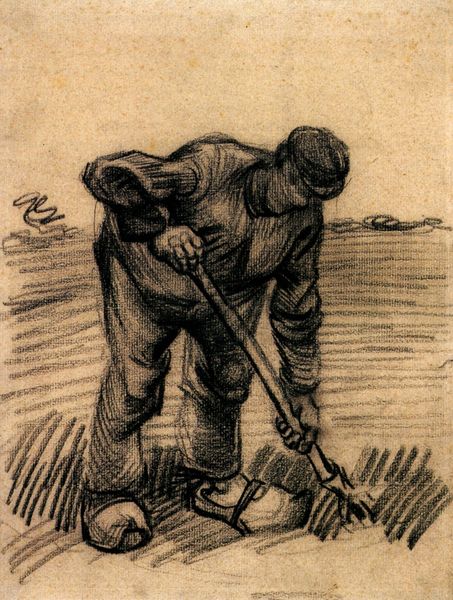
Copyright: Public domain
Editor: Here we have Jean-François Millet’s "The Diggers" from 1855, an oil painting done en plein-air. It evokes a feeling of earthy labor and the simplicity of rural life. What strikes me is the back-breaking labor suggested by the position of the figures. How would you interpret this work? Curator: I look at this painting and see the raw materiality of labor visualized. Note Millet’s application of oil paint; it mirrors the rough texture of the soil the diggers are working. He doesn’t idealize them; instead, he presents their work honestly. Consider the socio-political context of the time—France still heavily relied on agricultural labor. How do you think this portrayal relates to the art world’s fascination with peasant life? Editor: That's an interesting question. I suppose showing the hard work was a new concept to the people of that time. Perhaps they saw it as showing respect for their labor? I mean, it makes me consider the material conditions of their lives. Did this shift any art practices? Curator: Precisely! It shifted the focus to the process, the act of "making" a living, in this case literally "making" the land arable. It blurred the lines between craft and high art by foregrounding the work—the digging, the toil, the very physical involvement with the material world. Editor: So, the artwork itself becomes evidence of a physical interaction and maybe even of social commentary, too? Curator: Absolutely. It transforms how we value labor and its representation, it forces the audience to see and feel the act of working, therefore it values the act of it. This is way beyond representing pretty things only! Editor: I see it. I will definitely look for it in similar artworks now, thank you for helping me understand. Curator: It's been a pleasure to consider the material layers within "The Diggers" with you.
Comments
No comments
Be the first to comment and join the conversation on the ultimate creative platform.
